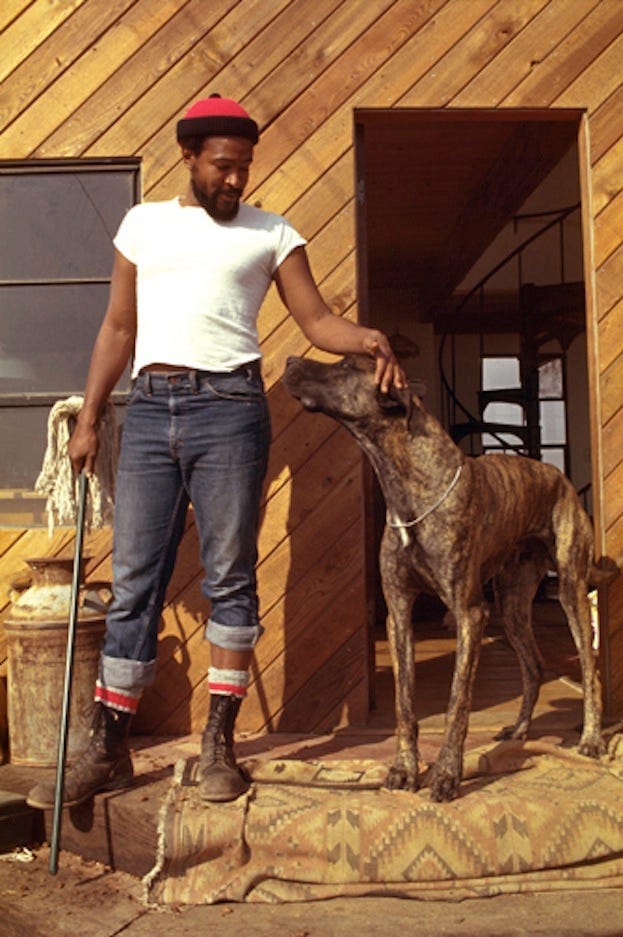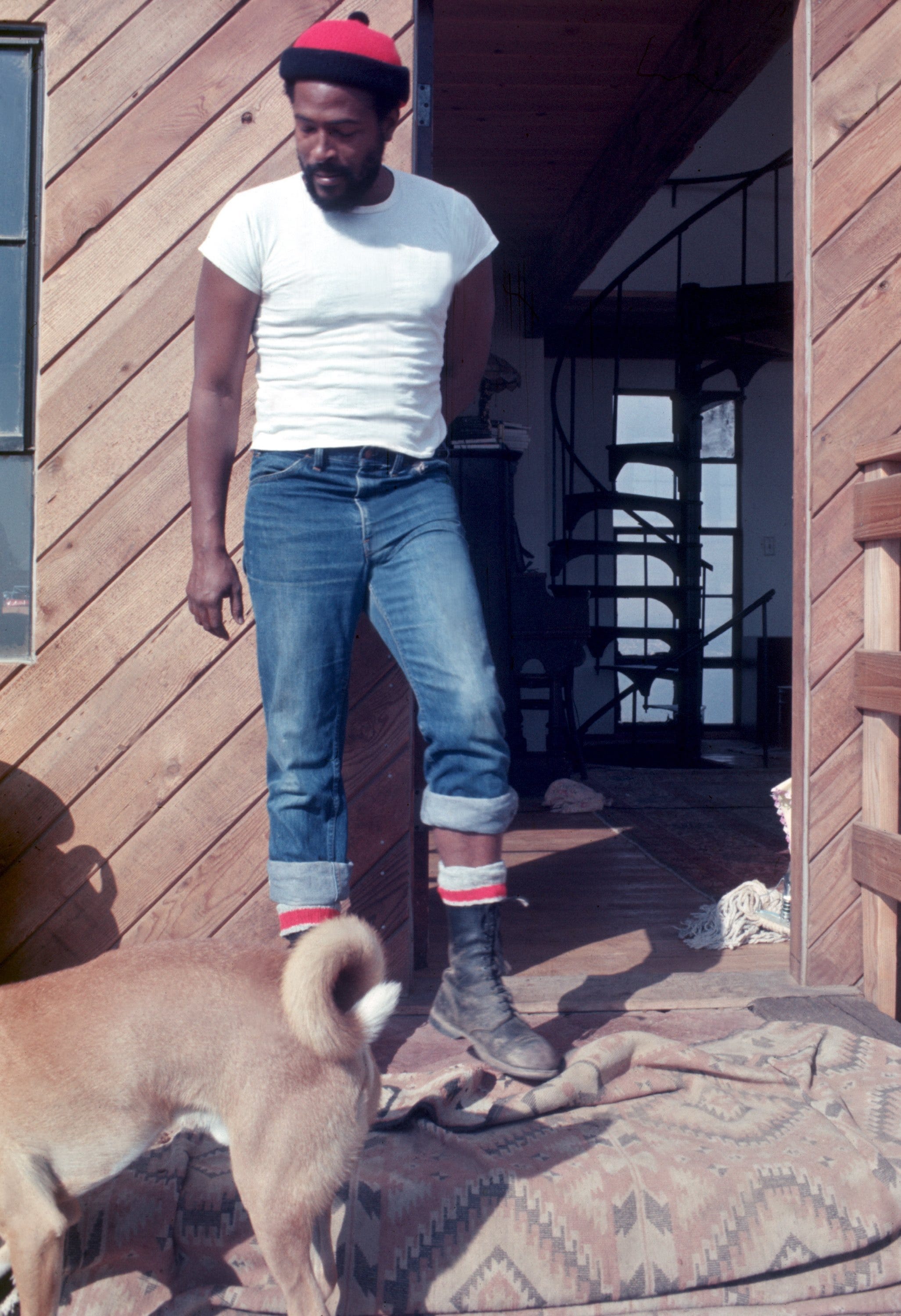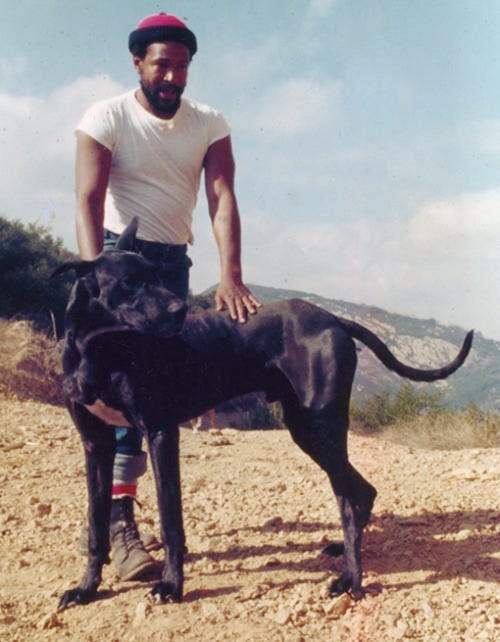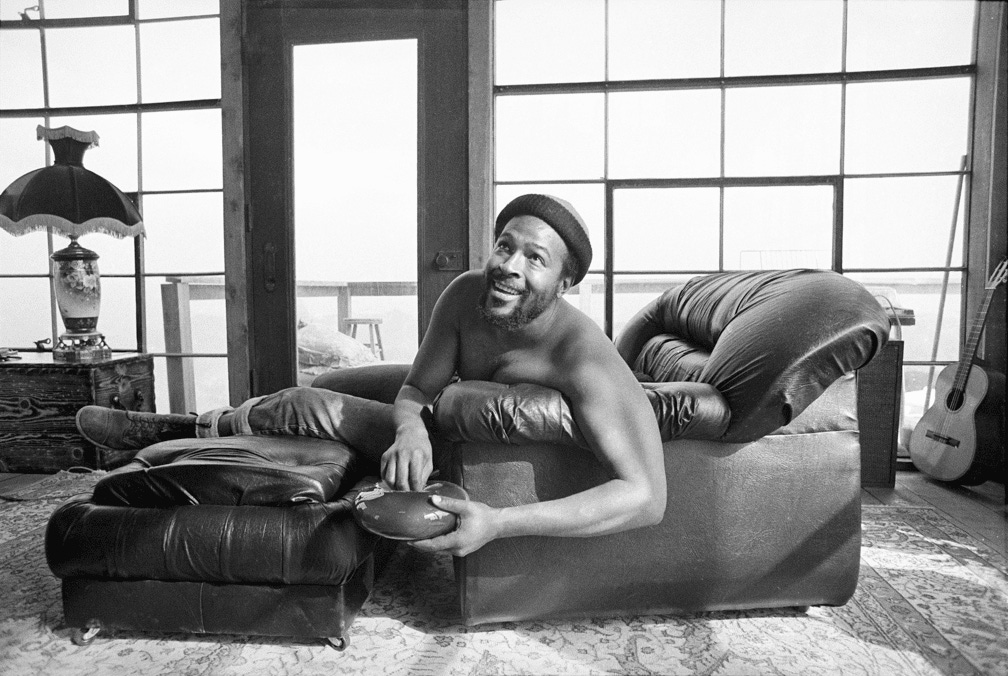The app for independent voices
In lieu of this week’s Art Dogs, a note on Marvin Gaye.
Cue the music, please.
Marvin Gaye’s life had so, so many traumas. Brutal abuse from his father, and even from his first wife, who was 17 years older then him. His own attempted suicides, drug addiction, and cruelties he inflicted on others as a result. His father would ultimately take the singer’s life, murdering his own son the day before Marvin’s 45th birthday.
One of the most fruitful periods of Marvin Gaye’s life was the early 1970s. He recorded "What's Going On," inspired by witnessing police brutality at an anti-war rally in Berkeley. Released in 1971, it reached No. 1 on the R&B charts within a month, staying there for five weeks. Marvin then spent ten days recording the What's Going On album, which became his first million-selling album. It had two more top ten singles, and Rolling Stone named it the album of the year.
But by the spring of 1972, in the wake of this major success and escalating marital troubles, Marvin Gaye began to suffer from writer's block. He filed for legal separation from his first wife, Anna, in the winter of 1973, and started to use music to work his way through the traumas of his childhood.
He began to record an album that was meant to explore the general theme of love and romance, but as a metaphor for God's love. In his book Divided Soul: The Life of Marvin Gaye, biographer David Ritz wrote the following of the singer's inspiration behind his next album, Let's Get It On:
If the most profound soul songs are prayers in secular dress, Marvin's prayer is to reconcile the ecstasy of his early religious epiphany with a sexual epiphany. The hope for such a reconciliation, the search for sexual healing, is what drives his art ... The paradox is this: The sexiest of Marvin Gaye's work is also his most spiritual. That's the paradox of Marvin himself. In his struggle to wed body and soul, in his exploration of sexual passion, he expresses the most human of hungers—the hunger for God. In those songs of loss and lament—the sense of separation is heartbreaking. On one level, the separation is between man and woman. On a deeper level, the separation is between man and God.
And so, Marvin Gaye’s masterpiece, which has been called “one of the most sexually charged albums ever recorded," is in fact about spiritual healing.
While creating Let’s Get It On, Marvin spent much of his time in a home in Topanga Canyon with his two dogs and new girlfriend, 17-year-old, Janis Hunter. They lived together in a rustic A-frame house “so high up in the twisting and turning hills that friends had to call from a gas station below on Highway 1 and have someone escort them up.”
Marvin later said that this period would mark one of the happiest times in his life. He could “enjoy the canyon’s quiet seclusion and focus on his music.”¹ Marvin taught Jan to drive, and bought her a black Porsche 911 to cruise through the canyon roads together. He remembered how listening to bird songs and the sound of the wind could “ignite his creativity” and told biographer David Ritz “For weeks I’d just sit and stare into space. With enough time, I was sure this was the place where I could create my masterpiece.”
Photos:
Marvin Gaye performing on stage at Radio City Music Hall. Photo by Ebet Roberts/Redferns
Marvin Gaye in 1973 in Topanga Canyon with his two dogs. Photo by Jim Britt/Michael Ochs Archive/Getty Images





